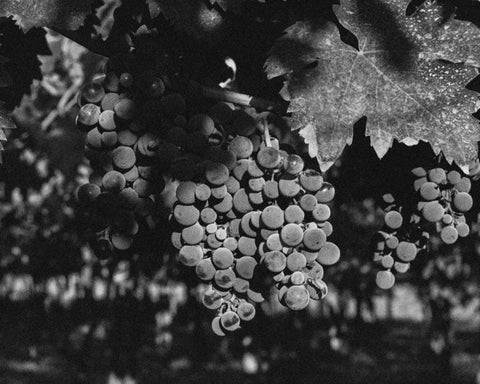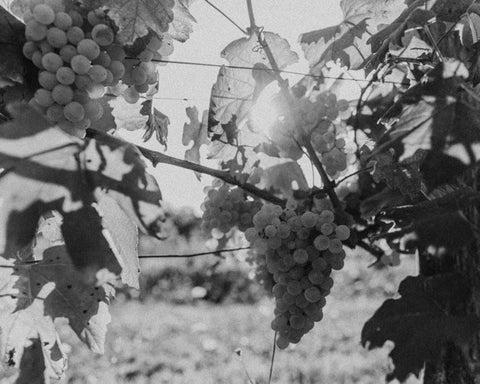One of France's more overlooked wine-growing regions, Languedoc-Roussillion — a massive historical territory that spans from the coastal border with Spain to the coastline of Provence in southeastern France — now offers some of the highest-quality red and white wines. An area once known for generic bulk wine production – more than a third of French wine output is here – viticulture in the Languedoc-Roussillion (also known simply as "The Languedoc") has evolved significantly over the past 30 years. At the same time, winemakers have maintained their historic focus on varietal blending without the strict winemaking rules and with creative freedom not found in Burgundy and Bordeaux.
Although usually grouped as a single region, Languedoc-Roussillon can also be understood as distinct areas. Languedoc, comprised of three of the five départements, is culturally and historically tethered to France. In contrast, Roussillon has historical ties with Catalonia, an autonomous community in Spain's northeast.
While the majority of Langeudoc's production is still IGP (Indication Géographique Protégée, a lower-quality category of French wine just above table wines) wines, the region contains 23 AOCs (appellation d'origine contrôlée, the main geographical indication for French wines), which together comprise around 16 percent of the region's total production.
Terroir and Climate of Languedoc-Roussillion
Languedoc-Roussillon generally has a warm to hot, dry Mediterranean climate, with searing summers and mild temperatures throughout the year. Heat and sun are dangerous to overripening grapes, but the best vineyards remain cooler due to their elevation and the influence of coastal winds from the Atlantic and Mediterranean.
The tumultuous geological history of Languedoc-Roussillon created a vast array of soil types, including pebble terraces, sandstone, calcareous clay, limestone and shale, clay soils, puddingstone, and sandy soils. In particular, many of the region's top wines come from the rocky soils of the mountain foothills.
The AOCs of Languedoc-Roussillion
The region's 23 AOCs are recognized for their distinct characteristics and high-quality wines. Notable AOCs include:
- Corbières: Known for its bold and structured red wines.
- Minervois: Produces well-balanced reds with a mix of fruity and spicy notes.
- Coteaux du Languedoc: Encompasses a variety of sub-regions, each with unique terroirs and wine styles.
- Fitou: One of the oldest appellations, renowned for its robust red wines.
- Rivesaltes: Famous for its sweet fortified wines, often made from Muscat and Grenache grapes.
Red Wines of Languedoc-Roussillon
In this region, vineyards often have several varieties growing together, leading most producers to focus on red blends instead of single-varietal wines.
Grenache, Syrah, Mourvèdre, Carignan, and Cinsault are, therefore, usually blended, and all make comfortable homes in the region's red varietal repertoire. As in the Rhone Valley to the northeast, the ubiquitous garrigue shrub and its corresponding barnyard, earthy tones represent a hallmark of Languedoc-Roussillon red wines. Stylistically, red blends throughout the region can range from bold, concentrated, and chewy to light and pretty, depending on the producer and mix of grapes used.
As in Catalonia, right across the Spanish border, in Roussillon, all three major types of Grenache are prominently featured as the lynchpin of blended wines: Grenache Noir for reds, and its lighter-skinned variants Gris and Blanc for whites.
In the Banyuls AOC, on the mountainous border with Spain, winemakers use these varietals to produce a well-known type of sweet wine using mutage. The process bears some resemblance to Port production; Alcohol is added to the must to stop fermentation while sugar levels are still high, and then the wines are matured in oak barrels or outside in glass bottles exposed to the sun, which allows the wine to oxygenate (maderization). The result is a lower-alcohol sweet red wine unique to the area.
White Wines of Languedoc-Roussillion
Without the same stringent regulations on grape varieties found in Burgundy and Bordeaux, a diverse mix of white wine varietals thrives in Languedoc-Roussillon. Chardonnay, Vermentino, Chenin Blanc, and Muscat are some of the region's better-known and most important white grapes, often blended.
Also added to these white blends, the native varietal Picpoul (from the French phrase 'stings the lip') has gathered traction among low-intervention producers in recent years as a zesty, crisp wine-producing single varietal project. Better known in traditional Rhone white winemaking, Languedoc-grown Picpoul has gained popularity for its high-toned acidity, zippy mouthfeel, and incredible food-friendly nature.
Chardonnay, in particular, plays a prominent role in the white wines of Languedoc. It is the primary grape found in wines bearing the Vin de Pays d'Oc appellation, the IGP denomination that roughly follows the contours of the Languedoc-Roussillon. The well-known sparkling champagne-method wine Crémant de Limoux, produced around Limoux and bearing a much cooler climate than the rest of the region, also features extremely old-vine chardonnay.
Cuisine of Languedoc-Roussillon
The diversity of landscapes and areas within Languedoc-Roussillon lends to the mosaic of cuisines. The region is well-recognized for its dynamic local cuisine that utilizes fresh, classic coastal Mediterranean ingredients. In particular, olive oil, garlic, and basil, complemented by herbs like Thyme, Rosemary, and Bay Leaves, are often primary ingredients in the region's food culture.
The region's gastronomy reflects its varied landscape, cultural influences, and abundant natural resources. From hearty stews to fresh seafood, the cuisine of Languedoc-Roussillon offers a delightful array of dishes and products that highlight the region's culinary heritage.
Notable dishes include the renowned Thau Basin oysters, codfish brandade (a mixture of salt cod, olive oil, and potatoes), anchovies gratinés with herbs, and tuna à la catalane.
Cassoulet
Cassoulet is perhaps the most iconic dish of Languedoc-Roussillon. This hearty, slow-cooked casserole features white beans, pork, sausages, and duck or goose confit. The dish is named after the traditional earthenware pot, called a "castle," in which it is cooked. Cassoulet is especially popular in Castelnaudary, Carcassonne, and Toulouse, each boasting its recipe variation.
Brandade de Morue
Brandade de Morue is a creamy, flavorful dish made from salt cod, olive oil, garlic, and milk or cream. The cod is soaked to remove excess salt and then whipped into a smooth puree with the other ingredients. This dish is often served with bread or potatoes and is a staple in the coastal areas of Languedoc-Roussillon.
Bourride
Bourride is a traditional fish stew from the region. Like bouillabaisse, it is distinguished by its use of aioli (a garlicky mayonnaise) to thicken and flavor the broth. The stew typically includes white fish, monkfish, and vegetables like leeks, carrots, and potatoes. Bourride is often served with croutons or bread to soak up the flavorful broth.
Tapenade
Tapenade is a savory spread made from finely chopped olives, capers, anchovies, and olive oil. It can be used as a dip, a spread for bread, or a condiment for various dishes. Tapenade showcases the region's abundant olive groves and is a typical appetizer in Languedoc-Roussillon.
Tielle Sétoise
Tielle Sétoise is a savory pie from the coastal town of Sète. It is filled with a spicy mixture of octopus or squid, tomatoes, and garlic. The flaky and golden pastry crust perfectly contrasts the rich, flavorful filling. This dish reflects the region's maritime traditions and Mediterranean influences.
Typical Products
Olives and Olive Oil
Languedoc-Roussillon is renowned for its olive groves, producing high-quality olives and olive oil. The Picholine and Lucques varieties are particularly prized for their flavor and texture. Olive oil from the region is known for its fruity, aromatic qualities and is a staple in local cuisine.
Roquefort Cheese
Although technically from the nearby region of Aveyron, Roquefort cheese is a significant part of Languedoc-Roussillon's culinary heritage. This blue cheese is made from sheep's milk and aged in the natural caves of Roquefort-sur-Soulzon, developing a distinctive tangy and creamy flavor. It is often enjoyed with bread, fruit, and wine.
Seafood
The coastal location of Languedoc-Roussillon provides an abundance of fresh seafood, including mussels, oysters, shrimp, and various fish. The Étang de Thau, a large lagoon near Sète, is particularly famous for its high-quality oysters and mussels, which are enjoyed raw or cooked in various dishes.
Honey and Lavender
The region's diverse flora, including fields of lavender, provides an excellent environment for beekeeping. Languedoc-Roussillon produces a variety of high-quality honey, including lavender honey, which is prized for its delicate floral flavor and aroma.















